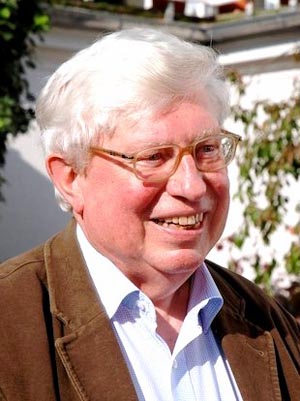This year’s Nobel Prize in Chemistry goes much deeper than any superficial notion of surface chemistry might suggest. Surface chemistry helps explain many of the processes of the chemical industry, such as catalysis in the production of fine chemicals, agrochemicals and pharmaceuticals, which can occur on the vast surfaces of finely divided or highly porous materials.
Surface chemistry is at the heart of burgeoning research into fuel cells and catalytic converters that could help reduce environmental pollution and can even explain why iron rusts and the destruction of the ozone layer, which is partly due to reactions on the surface of tiny atmospheric ice crystals.

Albert Fert
In the 1960s, Gerhard Ertl currently at the Fritz Haber Institute of the Max Planck research centre in Berlin, Germany, began to explore the possibilities of using techniques being developed in the then newly emerging semiconductor industry, for studying how molecules and atoms interact at surfaces. His painstaking work, initially on the Haber-Bosch process for fixing nitrogen from the air for making artificial fertilizers, led to new techniques for surface chemistry by demonstrating how different experimental procedures can be used to provide a complete picture of a surface reaction.
Ertl’s methods required advanced high-vacuum experimental equipment to allow individual layers of atoms and molecules to be observed on extremely pure metal and other surfaces. The work led to an entirely new experimental approach, which continues to provide important insights in a wide range of chemical studies with enormous scientific and economic impact.

Peter Grünberg
Giant compact hard disks

Gerhard Ertl
In 1988, Albert Fert and Peter Grünberg independently discovered a new physical effect that became known as Giant MagnetoResistance or GMR, in which very weak changes in the magnetic properties of a material give rise to a giant change the material’s electrical resistance.
At first glance, this might sound like an esoteric finding, but it has become one of the most important of the information technology age. It is through GMR that we can pack ever increasing quantities of data into smaller and smaller magnetic hard disks. Thanks to GMR, disks just a few centimetres in diameter can store gigabytes of information allowing notebook computers to displace desktops and some portable electronics devices such as mp3 players, PDAs (personal digital assistants) and compact video players to store thousands of documents and music files and hundreds of full-length movies.
GMR is the perfect tool for reading data from hard disks when information registered magnetically has to be converted to electric current. Magnetic disk storage media rely on changing the magnetisation of microscopically small areas. The read head scans the disk and registers these magnetic changes. However, a smaller head and a more compact disk, means smaller magnetic areas and weaker magnetism.
A read-out head based on the GMR effect can convert very small magnetic changes into differences in electrical resistance and therefore into changes in the current emitted by the read-out head. The current is the signal from the read-out head and its different strengths represent ones and zeros. It was less than a decade after the initial discovery of GMR, in 1997, that the first read-out head based on this effect was launched and soon became the standard technology.
High-density solid state storage is gradually catching up with magnetic hard disk technology, but has some way to go before it beats the tens of gigabytes possible with a GMR-based hard disk.
Further reading
Announcement of 2007 Nobel Prize in Chemistry
http://nobelprize.org/nobel_prizes/chemistry/laureates/2007/announcement.html
Fritz-Haber-Institut der Max-Planck-Gesellschaft announcement
http://www.fhi-berlin.mpg.de/ertl07.epl
Announcement of 2007 Nobel Prize in Physics
http://nobelprize.org/nobel_prizes/physics/laureates/2007/announcement.html
Peter Grünberg
http://www.fz-juelich.de/portal/index.php?index=1240
Albert Fert
http://www2.cnrs.fr/en/338.htm
Suggested searches
magnetoresistance